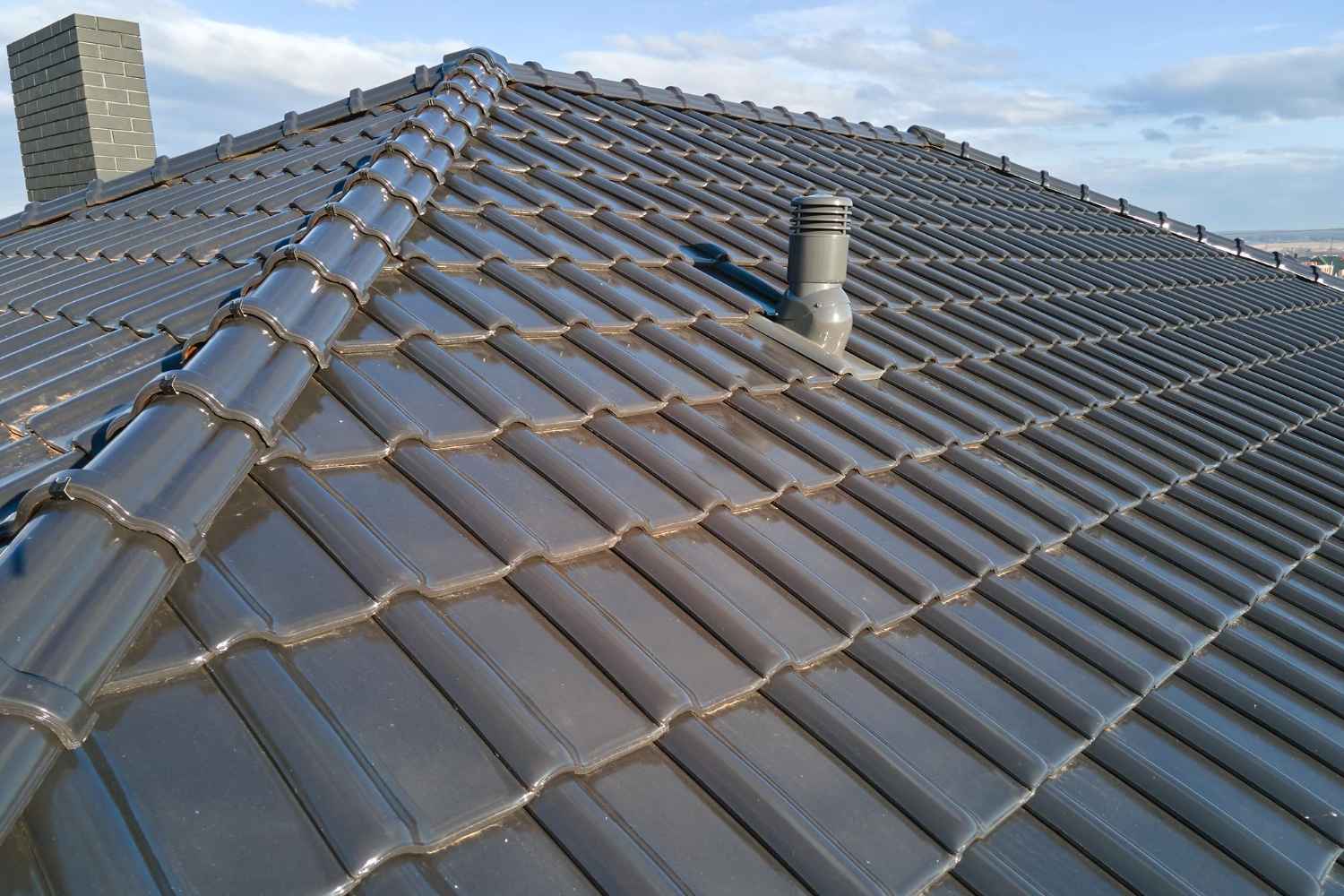10 Important Tips for Flat Roof Maintenance
Maintaining a flat roof is crucial for ensuring the longevity and functionality of your home or any other building structure. Unlike sloped roofs, flat roofs need special care and attention because of their unique structure and susceptibility to water pooling, debris accumulation, and other environmental factors. By implementing a proper maintenance routine, you can avoid costly repairs and enhance the life of your roofing system. This guide will explore 10 tips to help you keep your flat roof in excellent condition, ensuring it remains a reliable protective barrier against the external elements.
What Are Flat Roofs, & Why Is Their Maintenance Important?
A flat roof is nearly level, with a pitch of 10° or less. It is completely or almost flat. There are many reasons builders or homeowners may choose to install a flat roof, but the main deciding factor is that they are affordable than traditional pitched roofs.
Flat roofs are less sloped than pitched roofs, which makes them prone to water pooling, leaks, and debris buildup. Regular maintenance is important to increase the your flat roof’s lifespan. This helps avoid expensive repairs and keeps your home or business protected.
Types Of Flat Roof
Flat roofs can be made from various materials; each material offers unique advantages and challenges, necessitating the selection of the right one depending on the particular requirements of the building and climate conditions. The most common flat roof material types include:
EPDM: A flexible, durable rubber roofing system that’s resistant to Ultraviolet radiations, ozone, and severe temperatures.
TPO: A single-ply membrane that reflects UV rays and is energy efficient.
PVC: A durable material that shows resilience towards chemicals, fire, and extreme temperatures.
Built-Up Roofing: A traditional, durable roofing material that’s resistant to water and weather damage.
Modified Bitumen: A multi-layer system that’s resistant to punctures, tears, water leaks, and UV rays.
GRP: A lightweight, durable roofing material made from glass fibres and polyester resin.
Green Roofs: Covered in plants and vegetation, these roofs are energy efficient, provide better insulation, and reduce stormwater runoff.
Felt: A cheap option, but may become damaged by foot traffic or window cleaners in hot weather.
Single-Play Membrane Roofs: Lightweight roofs made from single-ply material, such as PVC and TPO.
Essential Tips for Maintenance of Flat Roofs
Flat roofs are popular in both commercial and domestic settings due to their stylish look and space-saving benefits. However, routine maintenance is vital for efficient functionality and avoiding leakage issues. Failing to maintain a flat roof can lead to expensive repairs and early replacements. The following are some of the maintenance tips that can prove to be helpful for protecting your flat roof and property for years.
1. Regular Inspections
To keep a flat roof in good shape, it’s crucial to inspect it regularly. Schedule these inspections twice a year, preferably in spring and autumn season, to identify potential issues earlier. Focus on the following:
- Cracks or Blisters: Keep an eye on cracks, blisters, or bubbles in the roofing material. If not fixed, these can cause leaks.
- Ponding Water: Ensure that water doesn’t pool on the roof, resulting in the damage to roofing material and causing leaks.
- Flashing: Inspect the flashing present around vents, chimneys, and other roof openings for any damage.
- Seams and Joints: Inspect seams and joints for any signs of splits or damage.
2. Clear Debris & Maintain Cleanliness
It’s important to clean a flat roof regularly to prevent leaks and damage. Remove leaves, branches, dirt, and debris from the roof surface. Keep roof drains and gutters clear. If necessary, hire professionals for thorough cleaning.
3. Address Ponding Water
Ponding is a big threat to flat roofs. Water that stays long can damage the roof, cause leaks, and is harmful for the entire structure. If you notice areas where water pools, it’s crucial to act fast. Make sure drains and gutters work well. If ponding continues to persist, a roofing professional should be called to level the roof for better water drainage.
4. Maintain & Repair Flashings
Flashing is important for flat roofs because it creates a waterproof seal around vents, chimneys, skylights, and other openings. Over time, flashings can wear out or come loose, causing leakages. Regularly check your flashings and fix any issues right away. Replace any damaged or missing flashings and seal them tightly so they remain intact.
5. Roof Coating & Waterproofing
A roof coat can boost the durability and waterproofing characteristics of your flat roof. It protects against UV rays, extreme weather conditions, and everyday damage. Additionally, roof coatings help save energy by promoting sunlight reflection and reducing heat loss. Before applying a roof coat, ensure the roof is clean and fix any issues beforehand. It’s a good idea to consult a professional to select the right coating for your roof type and local weather conditions. There are several types of flat roof coverings, each tailored for different roofing materials and environments:
- Acrylic Coatings: Ideal for flat roofs, they deliver excellent UV protection.
- Silicone Coatings: Known for their exceptional weather resistance and longevity.
- Polyurethane Coatings: Offer remarkable defense against water and impacts.
- Asphalt Coatings: Add a waterproof layer specifically made for asphalt shingle roofs.
6. Repair Promptly
Act immediately if you notice any problems during your inspections or find a leak. Delaying repairs can lead to more damage and higher costs. Small problems can usually be fixed by patching or sealing, but for bigger problems, contact local roofing professionals for help.
7. Maintain Records & Documentation
Keeping good maintenance records for flat roofs is important. Write down dates and what work was done, and record all the photos. This helps you track the roof’s condition and provides useful information for roofing professionals if there are problems. These records can also help with insurance claims and selling a property. Thus, creating a maintenance log with all the essential details is a good idea.
8. Tree & Vegetation Management
Trees and plants can weaken flat roofs. Branches hanging over may scratch the roof, and leaves can lead to clogging the drains and gutters. To prevent damage, regularly trim branches away from the roof. Also, be careful of plants growing on the roof; their roots can damage the waterproof layer. Remove moss, algae, or other plants quickly to keep the roof in its best condition.
9. Energy Efficiency & Flat Roof Insulation Regulations
Improving the energy efficiency of your flat roof can lower your utility bills and improve performance. Good insulation is key to keeping a stable temperature and stopping heat loss or gain through the roof. Ensure your roof insulation complies with local building codes and energy efficiency standards. Consider upgrading your insulation materials for better thermal performance and reduced energy use. Contact experts in energy-efficient flat roofing systems to find the best flat roof options for you.
10. Maintenance During Extreme Weather Events
Extreme weather, like hurricanes and strong storms, poses significant problems for flat roofs. It’s important to have a weather preparedness plan that includes regular inspections before and after such events. Check for loose or damaged materials, compromised flashings, and signs of leaks. Apply extra sealants or barriers to protect weak areas, especially at the roof edges. Keep contact information for roofing contractors handy for urgent repairs on flat roofs.
How Long Does a Flat Roof Last in the UK?
In the UK, flat roofs generally have a lifespan of 20 to 30 years, which can vary based on the materials employed and the level of maintenance provided. Premium roofing materials, like EPDM (Ethylene Propylene Diene Monomer) rubber membranes, are known for their durability and can significantly extend a flat roof’s life with regular upkeep. Selecting high-quality materials and adhering to maintenance schedules are crucial to maximising the longevity of flat roofing systems.
Conclusion
Maintaining a flat roof is crucial for ensuring its longevity and preventing costly repairs. By following these 10 important tips, homeowners can effectively manage potential issues such as water pooling, membrane damage, and debris accumulation. Regular inspections, prompt repairs, and proper drainage solutions will not only enhance the lifespan of your flat roof but also provide peace of mind as you protect your investment. Stay vigilant and undertake proactive approach regarding your maintenance efforts for a robust and functional roof that lasts for years.

